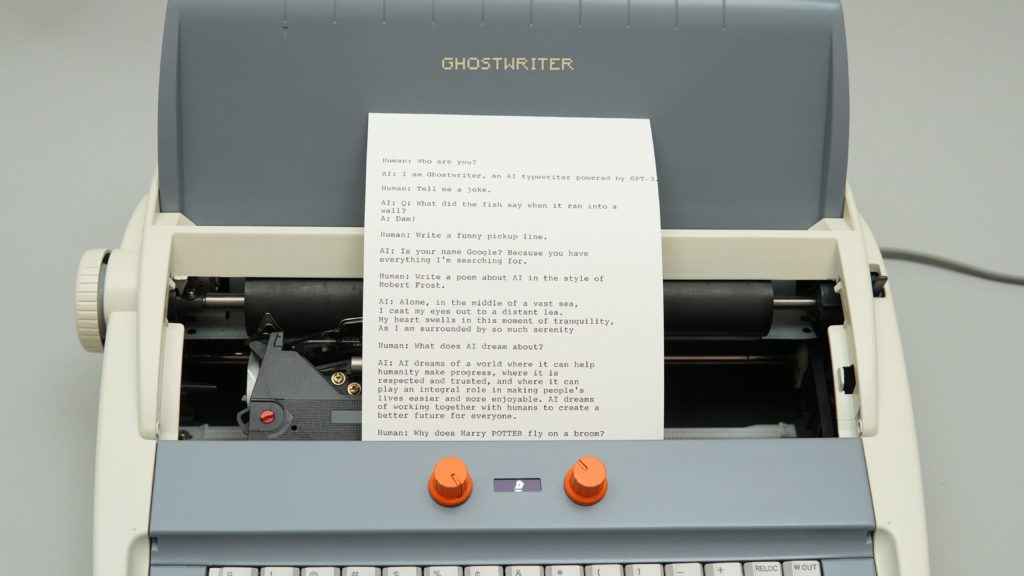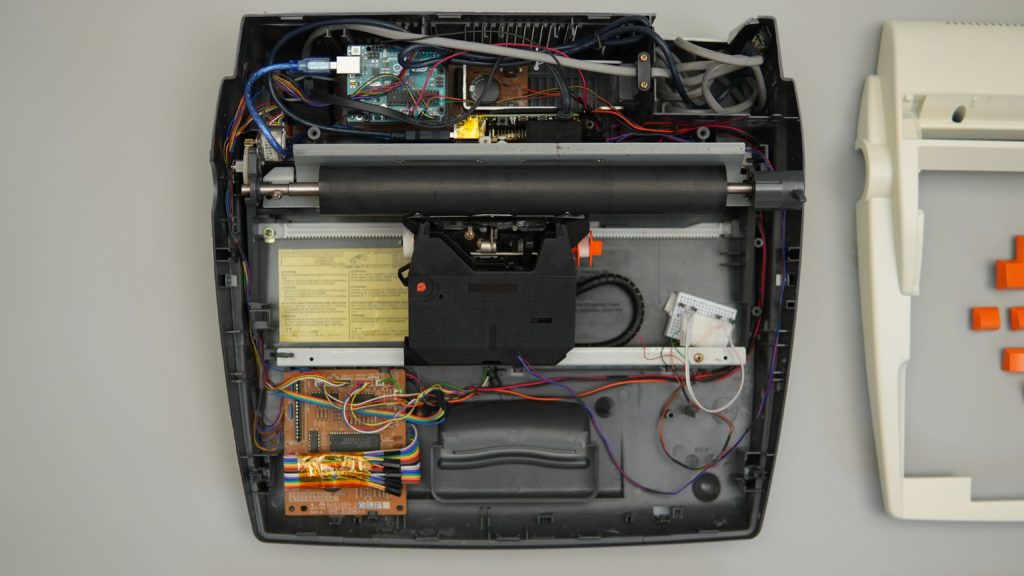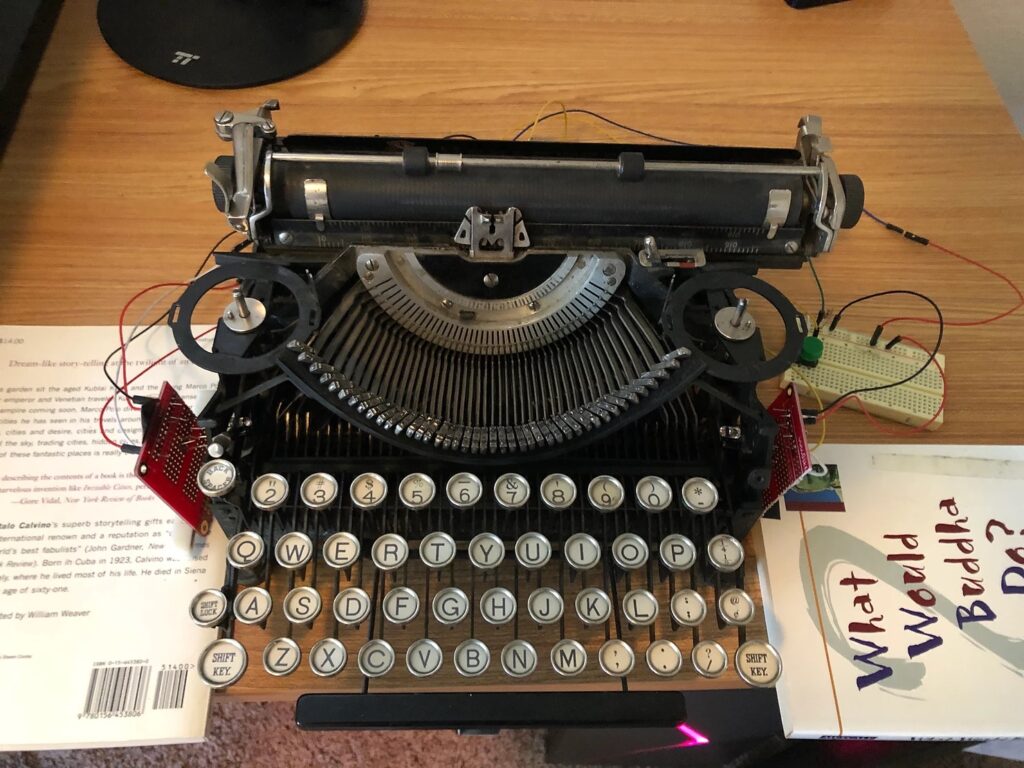16

Much to the consternation of those of us who write for a living, AI writers are gaining traction as their capabilities increase. The hot name in the AI content creation industry at the moment is ChatGPT, which is powered by OpenAI’s GPT-3 engine. With the right input and direction, GPT-3 can output some impressive writing. To harness that power in a co-writing assistant, Arvind Sanjeev built the Ghostwriter.
Ghostwriter is a vintage Brother electric typewriter retrofitted with modern hardware that lets it access and utilize the GPT-3 API (application programming interface). The user can type a query onto paper, such as a writing prompt or question, and GPT-3 will return a result that also prints out on the paper. By guiding GPT-3 with suitable prompts, the user can receive as much AI-generated text as they like. They might then edit that text for publication, use it as-is, or showcase the manuscript as an art piece.

In addition to the writing capability, Ghostwriter is gorgeous. Arvind cleaned up the vintage machine with a fresh coat of paint and added orange accents that enhance the design. A tiny OLED screen shows an animated logo and status information. Inside the machine are two modern components important to the new functionality: an Arduino Uno board and a Raspberry Pi single-board computer. The Arduino both monitors the typewriter’s keyboard matrix to detect key presses and triggers key presses to print out the GPT-3 results. It sends key presses to the Raspberry Pi and receives text strings in return, and the Raspberry Pi connects to OpenAI’s API.
The result is beauty and functionality in the same package. It is an interactive art piece that demonstrates the power of cutting-edge AI services.
The post Ghostwriter is a gorgeous typewriter with an onboard AI co-writer appeared first on Arduino Blog.





